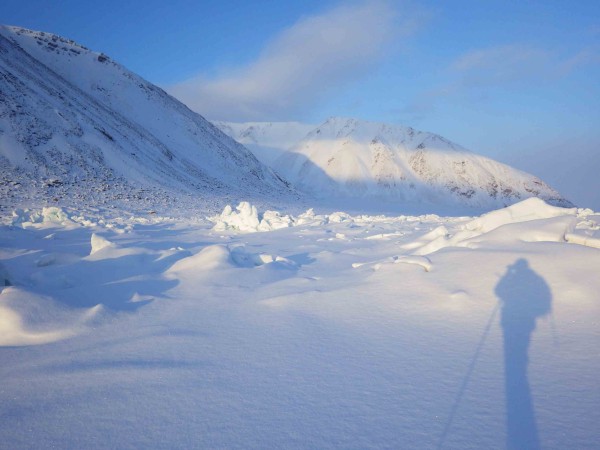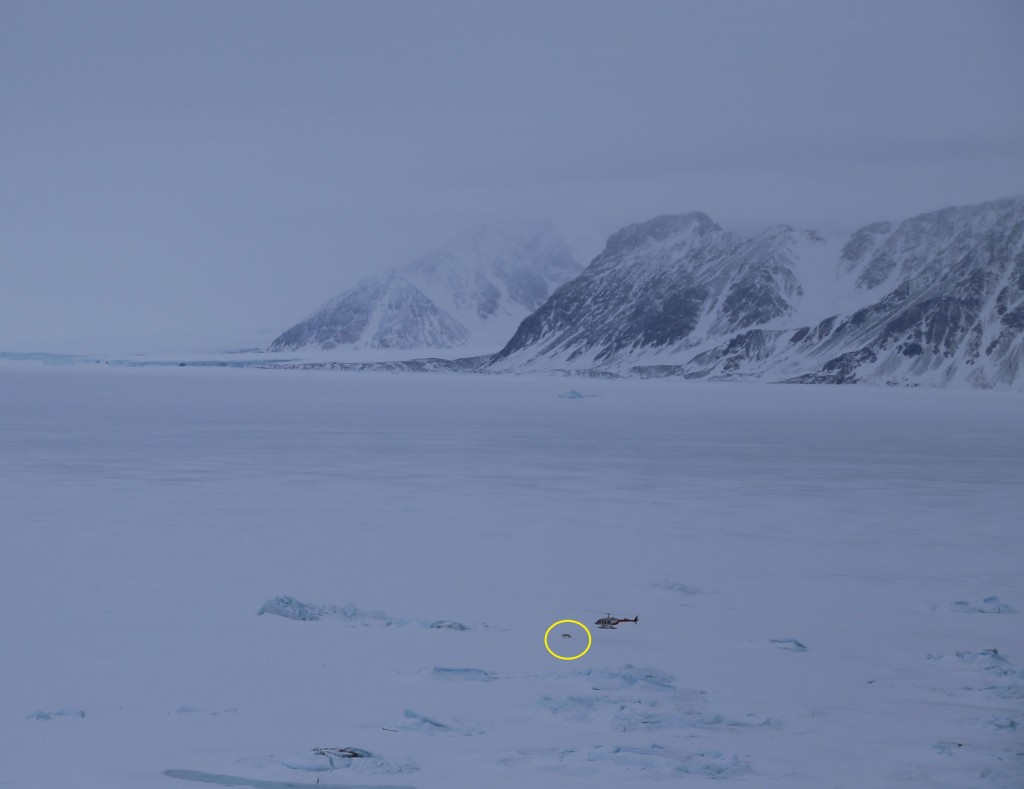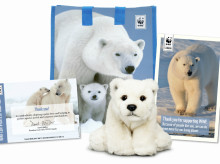Polar bears of the Last Ice Area: The Daily Research Routine
Written by Vicki Sahanatien, Senior Officer, Government & Community Relations, Arctic Program
In the spring, I spent a few weeks in Kane Basin, high in the Arctic, in the region we call the Last Ice Area. I was there as part of a research term, in the area to learn more about the polar bears that call this area home, and the sea ice that is their habitat. As the Arctic warms and the ice retreats, we expect this to be a critical area for ice-dependent species like the polar bear, making it essential that we better understand the region and its current inhabitants.
One by one we wake up, a little confused about the time and what day it is. It is 6 p.m., time for breakfast. We have been working all “night”, which in May in the high Arctic means the sun is high and bright, just like the morning and afternoon. The only way to know what general part of the day you are in is by checking on where the sun is in the sky: north (night), east (morning), south (afternoon) or west (evening). There are also changes in the quality and strength of sunlight with time of day and this is the reason we are searching for polar bears between 8 p.m. and 10 a.m. It is cooler during that period, which polar bears prefer, so they are more active and easier to spot from the air. We’re looking for yellow-white objects on snow white background – it is important to maximize our ability to detect the bears.
The team checks the weather and forecast with Polar Continental Shelf Program for the areas we plan to work in today. We review the satellite imagery of the past several hours and the aviation forecast. The team leader, Stephen Atkinson, makes the call: to go, hold and watch the weather, or stand down. Today it’s a go, so we check survey gear (GPSs, darts, dart gun, data sheets, cameras), replenish the food sack, fill Thermoses with coffee and tea, fill water bottles, and the engineer prepares the helicopter. Last, we don our field clothes: layers for warmth but not too warm – sweating is a bad thing to do in the Arctic. A quick review of the day’s plan and we load the helicopter with our supplies, then climb in ourselves – three researchers and our pilot. Then we’re off for 10-12 hours searching for polar bears, depending on the weather conditions as we go. We stop for breaks every three hours or so, when the helicopter needs to be refueled. We fly predetermined transects (paths), spaced at five km in the high density polar bear areas and 15 km in the low density areas. Each time a bear is observed, we circle back find the first observed location, mark it on the GPS, and drop off two people on the sea ice with emergency gear and a shotgun, to make the helicopter lighter and more maneuverable. The remaining researcher and the pilot fly off to find the bear, dart it, collect the sample and return to pick-up the crew. The dart is tagged with a neon flag so we can find it, and is designed to remove a tiny piece of the bear’s flesh – not enough to cause them any trouble, but enough for us to run our tests. It is a quick operation, sometimes as little as five minutes from drop off to pick up, if there is one bear on smooth ice, longer if there are multiple bears or the ice is rough.
It’s another successful day – over the 10 survey days a total of 84 bears were observed: males, females, sub-adults, mating pairs, and females with cubs of the year and yearlings. We also observed many seal kills, both old and fresh. We found bears were in almost every type of sea ice but mostly on landfast ice, connected to the shore and unmoving. This included the landfast ice of the fiords that had a good layer of snow, landfast ice with multi-year ice floes that had drifted down from the Arctic Ocean, and the landfast ice with frozen in icebergs that had calved off the many glaciers surrounding Kane Basin. We return to Alexandra Fiord camp mid to late morning, tired, hungry and happy. The air is warm when we tumble out of the helicopter. Two people stay at camp each day and have dinner ready for us. We eat, review the day, and then dive into our sleeping bags.




